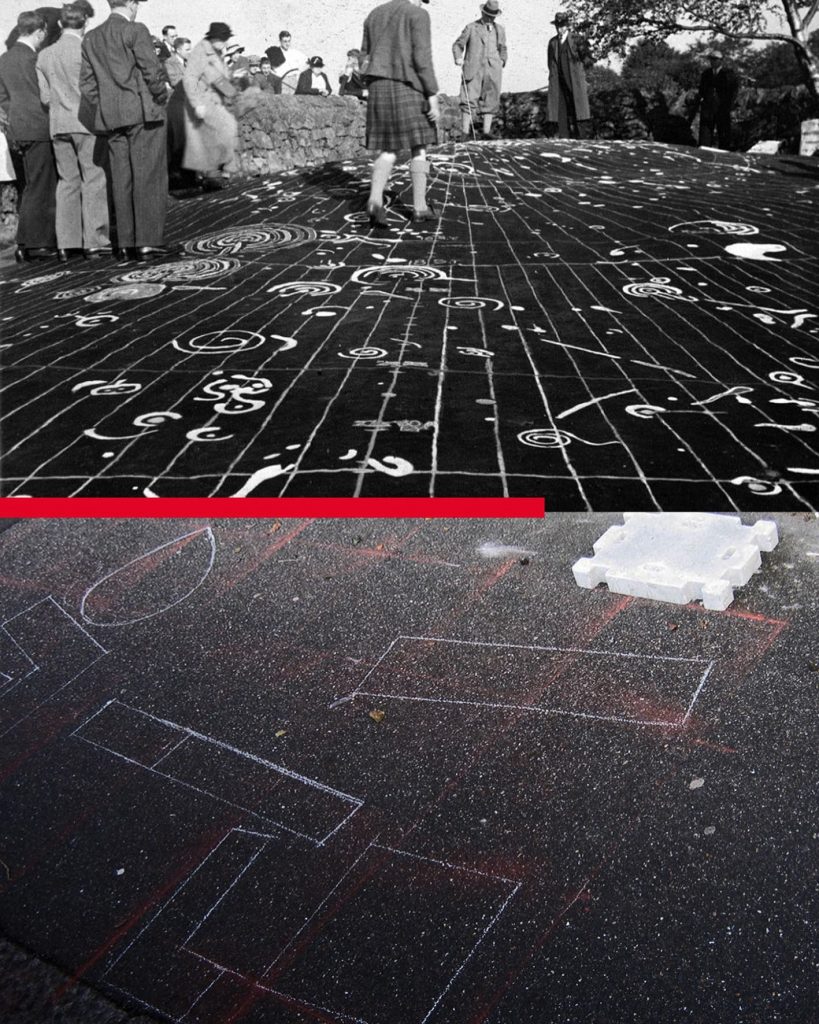cochno stone. 2500bce? southwater hastings. 2014
 1. cochno stone, 2500bce? in the summer of 1937 the glasgow antiquarian ludovic mann, in an attempt to make the stone’s artwork readable, painted the prehistoric cup and ring symbols of the stone and overlayed the stone with a grid of his own invention. however the perpetual visiting of the site and its attendant damage it was finally buried in 1965 in an attempt to preserve the stone’s surface. this extraordinary intervention by mann, frowned on today, did in its own crude way highlight the need we have to make such artwork present. archaeologically, moves are afoot to uncover the stone again so it’s surface might be digitally scanned as a non intrusive way of revealing the stone before it is once again re-covered. the images of that earlier intervention however are very powerful and poses a question which is very pertinent in this context – can these pastscapes inform contemporary art/spatial practices and perhaps, in turn give us insights into these pastscapes which might otherwise be lost or left unappreciated. 2. southwater hastings, 2014. an experimental pavement drawing by henry|seaton exploring the potential for such groundworks to hold extended meanings and develop alternative or unthought of urban narratives. (red gridlines and white chalk outlines) this was an attempt to juxtapose symbols left behind in the act of creating women’s clothing textiles in west africa and transpose them to an unusual and seemingly alien context. transporting the symbolic objects created in one context to that of another, produces a conceptual juxtaposition of incommensurate modes and material. the outcome provides the possibility of opening up new meanings. the image created becomes a dialectical interaction through place and time emphasising our inter-connectiveness in an entangled world. @henryseaton, |